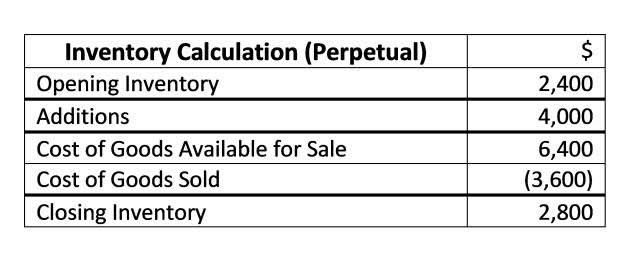Some vendors of entry-level ERP sell to both small and midmarket (also called medium-sized) businesses — often lumped together as SMBs — and claim their products can scale to accommodate growth. Built for the digital age, today’s ERP cloud embraces mobile, social, analytics, and the latest emerging technologies. Cloud-based ERP applications are often embedded with next-generation technologies, such as the internet of things (IoT), blockchain, AI, machine learning, and digital assistants. Women’s childbearing years, usually assumed as the ages from 15 to 49 years for the purpose of analysis. In this release, births to women less than 15 years are included in the years age group and those 50 years and older are included in the years age group. After each Census, the ABS uses undercount-adjusted usual residence Census counts to construct a new population baseline at the 30th of June of the Census year.
Standardize your business processes: Leverage an out-of-the-box approach

As an example of ERP-enabled automation at work, consider our own specialized food ERP’s production scheduling toolset, which can automatically create purchase orders to meet demand based on predefined parameters. Our solution can also automatically prompt your personnel to conduct important quality checks and will immediately place on hold any items that fail to meet your predefined standards. In a world of just-in-time delivery and agile manufacturing, implementing the right technology can help you dot every “I”, cross https://www.bookstime.com/ every “T” and propel your business to the next level of success. As the business landscape continues to evolve rapidly, organizations will need to adapt their ERP systems to address emerging needs and challenges. Establishing KPIs related to efficiency, cost savings, and other relevant metrics can help measure the impact of the ERP system on the organization’s performance. Migrating data from legacy systems to an ERP system and integrating the new system with existing applications can be challenging and time-consuming.
Data Conversion Costs
Many businesses incur more costs and spend more time than they budgeted at the implementation stage. If you need a module to add to your ERP software that can record absenteeism and productivity for individual employees, departments, and teams, the workforce management module is a good bet. The warehouse management module records, monitors, and analyzes all the warehouse activities of a company. There are lots of open-source ERP providers that provide free software download services for businesses, and only charge a low annual fee for access to cloud ERP solutions. Unlike with the on-premise ERP deployment model, companies do not purchase their servers but use remote servers managed by a third party. Maintenance, security, and upgrades are also handled by the cloud-based ERP software provider.

Access Exclusive Templates
Microsoft (MSFT) has long been an industry leader, with many customers using multiple software applications from the company. Some businesses benefit from enhanced real-time data reporting from a single source system. Accurate and complete reporting help companies erp defined adequately plan, budget, forecast, and communicate the state of operations to the organization and interested parties, such as shareholders. An open-source ERP system (or any open-source software, for that matter) provides users with access to the source code.
The company might need to rethink how it’s organized or risk ending up with incompatible technology. ERP applications also allow the different departments to communicate and share information more easily with the rest of the company. It collects information about the activity and state of different divisions, making this information available to other parts, where it can be used productively. Cloud ERP software emerged in the early 2000s, and today, machine learning and other supplemental technologies are helping companies run even more efficiently to measure up against the competition. Several vendors are popular with SMBs, notably Acumatica, Sage Intacct and Oracle NetSuite, the SaaS ERP pioneer. There are dozens of ERP vendors, most of which offer both on-premises and cloud options.
Open-Source vs Proprietary ERP Systems
- For further information refer to ‘Permanent and long-term movements – July 1971 – June 2006’ section of the methodology.
- The regions specified in this publication are Greater Capital City Statistical Areas (GCCSAs), Significant Urban Areas (SUAs), Local Government Areas (LGAs), and urban and rural areas.
- Though the earliest ERP systems were designed specifically for use by large enterprises, they can now be found in a growing number of smaller companies because of their usefulness.
- Reports can be generated with metrics, graphs, or other visuals and aids a client might need to determine how the business and its departments are performing.
- With its advanced CRM capabilities, businesses can easily build fruitful and long-lasting relationships with their customers.
MRP remained the manufacturing standard until manufacturing resource planning (called MRP II) was developed in 1983. MRP II featured “modules” as a key software architectural component, and integrated core manufacturing components including purchasing, bills of materials, scheduling, and contract management. For the first time, different manufacturing tasks were integrated into a common system. By 1990, technology analysts had a name for this new category of business management software—enterprise resource planning.
What are some of the features of an ERP system?
- Infor ERP is a powerful enterprise resource planning (ERP) solution designed to help businesses run their core business operations efficiently.
- Life expectancy refers to the average number of additional years a person of a given age and sex could be expected to live, assuming current age-sex specific death rates are experienced throughout their lifetime.
- Two-tier ERP is an ERP approach that combines two systems to address the peculiar needs of large enterprises.
- This includes providing comprehensive training on the new system for all affected employees and ongoing support and resources to help them adapt to the new system.
- For example, if your company uses business systems from multiple vendors, it is possible to integrate the data from those business systems to automatically flow into your ERP.